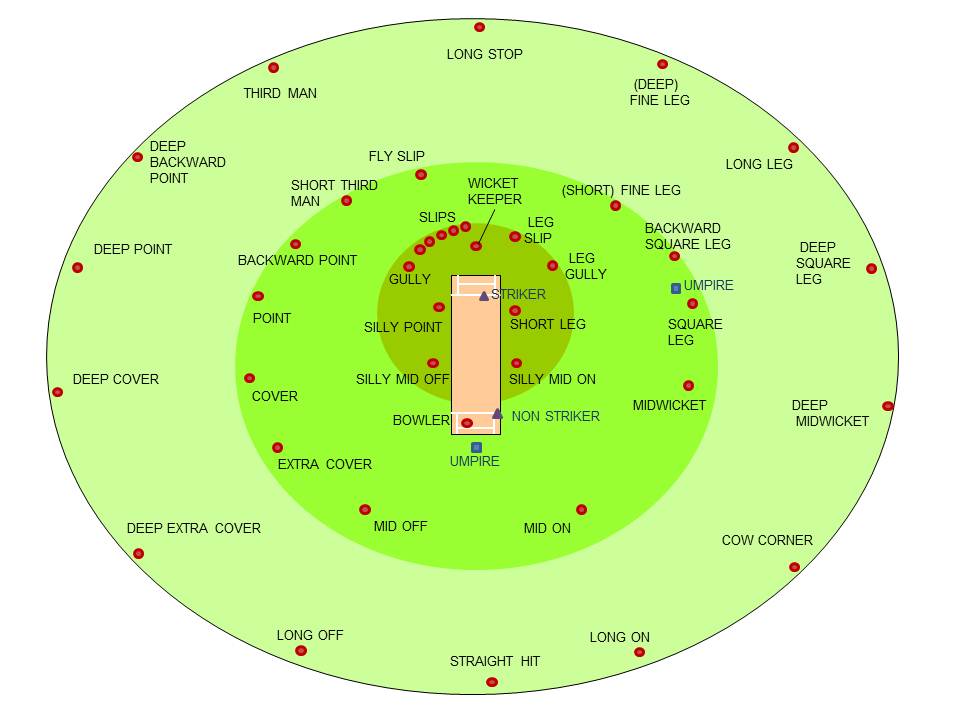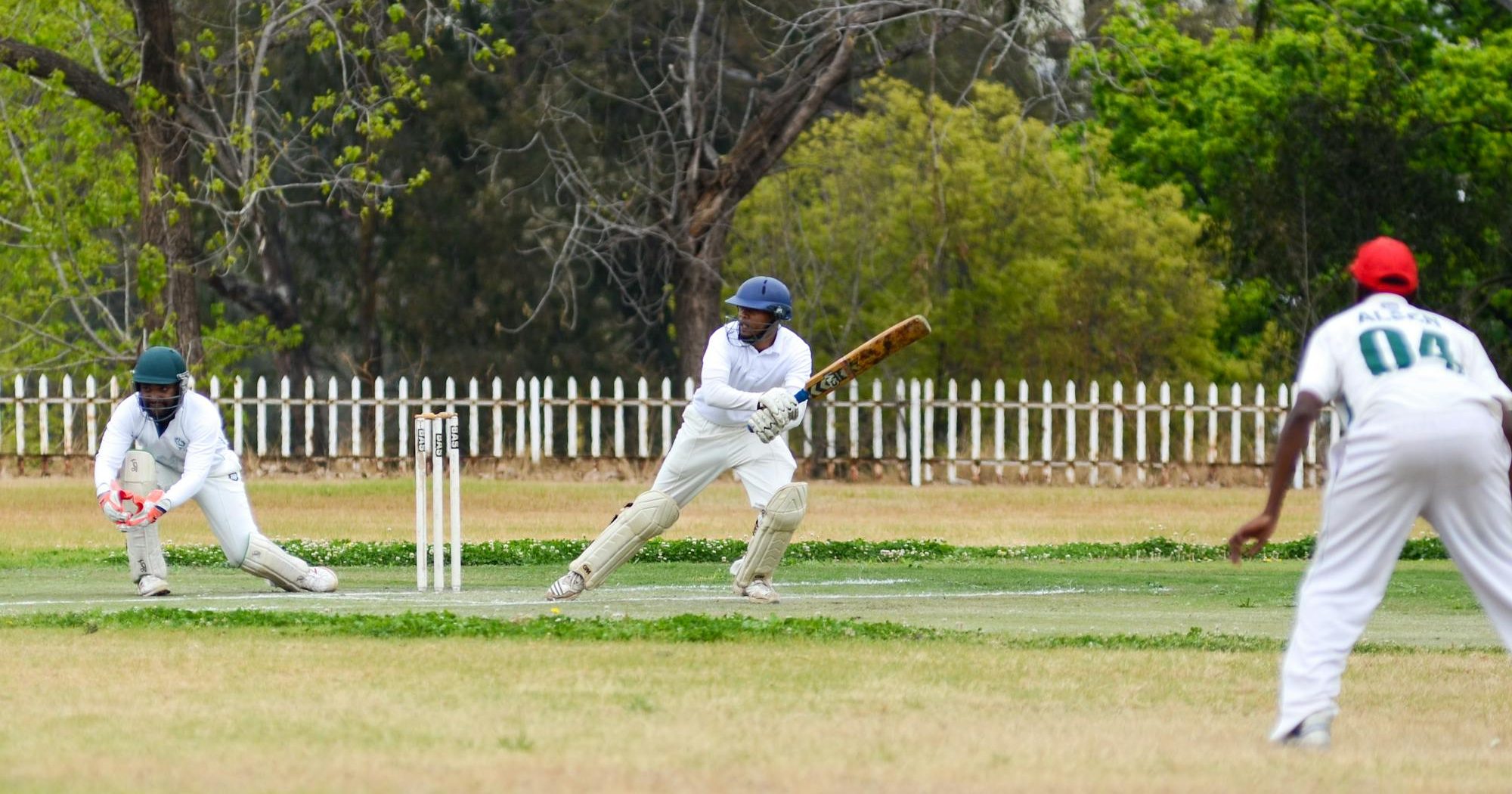Did you know that around 1/3rd of the UK’s population likes cricket? If you are here, you must be one of them. The best part is that not just men, but even women’s cricket is gaining traction. And as popular as the game is, it can be confusing as well. With its multiple technical terms, it can leave rookies in total confusion. Well, it’s your lucky day, because here is a guide all ready to teach you about the cricket fielding positions and make the technical terms easy to understand! Let’s get started, shall we?
RELATED: Live Cricket Streaming – 2024 Guide
Cricket Fielding Positions: Complex Terms Explained in Simple Words

All the fielding positions are divided into three categories, close infield, infield and outfield. Here is the breakdown of all the cricket fielding positions that will help you better understand the game and improve your winning odds.
Close Infield Positions
Each of these positions is located within a span of 15–20 yards (13.7-18.2m) from the batter. These fielders remain static when the bowler runs in. Here are the close infield positions:
-
Wicketkeeper
Considered the most important fielding position, a wicketkeeper is responsible for taking quick catches while they stand behind the batsman and stump. Apart from taking run-outs, they also help appeal for an LBW. Out of all the fielders, they are the only ones who wear special thick gloves to absorb the lightning-quick catches.
-
Slips
Slips are positioned either on the right or left of the wicketkeeper. It all depends on the hand the batsman uses. These fielders have incredible reflexes to pull off nearly impossible edge catches. There can be 1 or as many as 6 slips that are positioned diagonally from each other so that they don’t clash among themselves.
-
Gulley
A gulley might look like a slip, but when you look carefully, you will realise that while slips are placed closer, a gulley is much deeper and squarer to the batsman. They secure catches that the slips might miss and also assist in stopping boundaries from the backfoot of the batsman.
-
Leg Slip
This fielder stands out from the rest of the slips as they are positioned on the opposite side of the wicketkeeper. Their role is to secure the catches from the leg side of the batsman. They often take some important catches that take out the batsman.
-
Silly Point/Short Leg
This is a tough position as the fielder is placed very close, either on the right or left, to the batsman. Their purpose is to take the catches that might loop into the air when a spinner is bowling or cut off runs when the batsman hits the ball towards them.
Infield Positions
These positions are at a distance of 30 yards (27.4m) from the pitch. The role of these fielders is to prevent singles, stop the ball before it hits the boundary, or create run-out opportunities. Here are the infield positions:
-
Point and Square Leg
Point and backward point fielders are positioned horizontally from the batsman’s offside. Their job is to ensure that the batsman doesn’t score the easy runs from their offside. And, on the other hand, square leg and backward square leg carry out the same role, but on the opposite side of point and backward point.
-
Mid-off and Mid-On
Mid-off and mid-on fielders need to be highly agile they have to stop every shot that comes down the ground. A mid-off is placed on the offside of the batsman at a 30-degree angle so that they are clearly visible to the batsman. It’s a popular position among captains as they can easily communicate with the bowlers from here. A mid-on plays the exact role, just on the leg side of the batsman.
-
Cover
A cover is placed at a 45-degree angle from the batsman’s offside. However, they are located slightly closer to the batsman as compared to a mid-off or mid-on. They need to be in shape as they have to secure powerful boundaries that the batsman generally shoots from this area. An extra cover can be positioned between a cover and mid-off.
-
Mid-Wicket
These fielders are meant to cut off runs on the legside of a batsman where the ball might get hit often. They are placed between square leg and mid-on.
Outfield Positions
These positions are spread out as they have to cover a larger space on the ground. The fielders in these positions stop fours and sixes and also secure difficult catches. Here are the outfield positions:
-
Fine-Leg and Third Man
Fine-leg fielders are positioned on the legside behind the batsman at a 45-degree angle on the boundary. But they can come in whenever necessary to cut off boundaries into singles. The third man also carries out the same role, placed on the opposite side. And since that area is where the batsman hits many shots, they can cut off quite a few runs.
-
Deep Point and Deep Square Leg
Deep point fielders are placed at the same spot as the point but outside the infield. If the ball gets past the close fielders, it’s their job to make sure and stop it. A deep backward point is also the same but slightly behind the batsman. Even though the roles of deep square leg and deep backward square leg are similar, they are on opposite sides.
-
Deep Cover
A deep cover fielder is placed near the boundary, in case cover and extra cover miss a ball. This position helps cut off crucial runs.
-
Long Off and Long On
These positions are just the same as mid-off and mid-on. But they are placed outside the infield. However, it’s unlikely that the same positions will be placed in the infield and outfield.
-
Deep Mid-Wicket and Cow Corner
A deep mid-wicket fielder has the same role as a mid-wicket but is situated near the boundary. A cow corner is also the same and placed between deep mid-wicket and long on. And as they are similar, they are not utilised at the same time.
All the cricket fielding positions are strategically placed during a match. And now that you have hopefully understood them all, you will be able to understand the game more and also tactically place the fielders during your next match. Who knows, you might even win it!
What Should You Know More About Cricket Fielding Positions? (FAQ)
What is the Difference Between Slip and Gulley?
Although a slip and gulley might look like the same position, there’s a difference in their placement and role. Slips are situated closer to the batsman in a tight-knit group but gulleys are slightly squarer to the batsman, ensuring they stop backfoot boundaries or catches missed by slips.
Where Do You Put Your Best Fielder in Cricket?
Ideally, your best fielder should be positioned where the odds of taking a catch are high or where the fielder can stop a maximum number of runs from the batsman.
How Many Fielding Positions Are There in Cricket?
The total number of positions in cricket can go up to as many as 32. However, during a match, only 9 active positions are in play. They are placed based on the strategy that the team adopts and they can change as and when required.
READ NEXT: ICC Men’s Cricket World Cup 2023 Review. Schedule, History, Favorites, and Prediction


